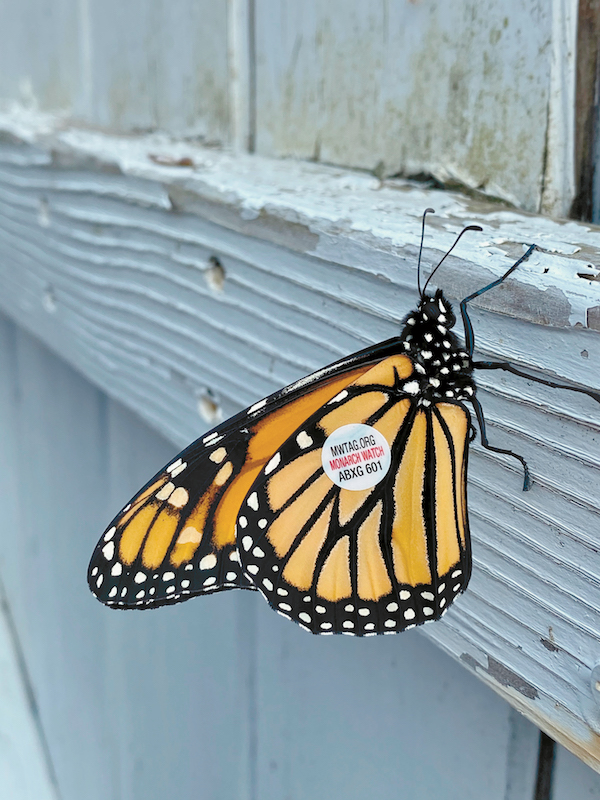For over 20 years I have been collecting monarch caterpillars. I would collect eight to ten caterpillars for the children in my daycare to observe eating the milkweed, spinning their chrysalis and hatching into butterflies. We would keep the butterflies a day or so and let them go.
In the beginning, I looked for the caterpillars and brought them inside. As I continued, I learned that monarchs can be susceptible to disease and have many predators, which can endanger the monarch in their caterpillar form. A female butterfly can lay up to 400 eggs but only about eight will make it to adulthood. Armed with this information, I began looking for the eggs of monarch butterflies, to ensure the caterpillar would have a better chance of making it to the butterfly stage.
Monarch butterflies arrive here around the middle of July after their long trip from the southern climates where they winter. Soon after arriving, a butterfly will lay her eggs and in three to four days the baby caterpillar hatches, eating the shell of the egg for nutrients. Over the next 10 to 14 days the caterpillar eats milkweed and molts four times until it is finally large enough to crawl to the top of the cage to form a “J”. The caterpillar then sheds its skin to create the chrysalis stage which takes about two weeks.

A monarch rests with a tag stuck to its wing.
About 24 hours before the monarch is ready to emerge, the bright green chrysalis begins to darken and become transparent. The orange wings poke through the chrysalis, and the newly emerged butterfly hangs to dry its wings for a few hours before it is ready to fly. The life cycle from egg to butterfly is about 30 days.
I learned a lot about monarchs and their migration patterns from monarchwatch.org, a nonprofit education, conservation, and research program. To help with their research I purchased tags (stickers) for my butterflies and, at the end of the season, I turn in the data from those I tagged.
The data includes the date the butterfly hatched, the gender, and where it was released. Most monarchs winter in Mexico or Florida then head north around March. Four generations later, the butterflies make it to the northern states and Canada during the summer months. Each step of their journey the butterflies live long enough to fly a little farther north to lay more eggs. Once they reach the northern states, the eggs from those butterflies hatch and eventually the butterflies head back to Mexico, upwards of 3,000 miles, a place they had never before been.
In Gorham butterflies that hatch between September 3 through 10 have the best chance to make it to Mexico. This year, I raised 125 butterflies with 46 hatching during the prime time according to science. The butterflies left Gorham in September; their journey to Mexico could take until January. If one of my 55 tagged butterflies is collected in Mexico I will be contacted.
Monarch caterpillars only eat milkweed, which is commonly found in fields, gardens and even roadsides. Consider mowing your fields in May or June before the monarchs make it to Maine. It is better to wait for a second mowing until the end of September or beginning of October to ensure the monarchs have plenty to eat during their time here. Many organizations give out free milkweed seeds to plant.
If you are interested in learning more about monarchs, consider reading “How To Raise Monarch Butterflies” by Carol Pasternak. For information on tagging monarchs, visit www.monarchwatch.org.


